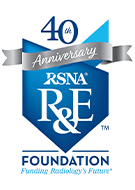Your Donations In Action: John Zech, MD, MA
Harnessing AI for the Personalized Detection of Pediatric Upper Extremity Fractures


Fractures are the most common cause of misdiagnosis in the emergency department and a leading cause of malpractice claims in radiology. Because of the greater plasticity and open physes of the pediatric skeleton, pediatric fractures are particularly challenging to identify and they show patterns of injury that differ from those of adults.
For his 2022 GE Healthcare/RSNA Research Resident Grant project, John Zech, MD, MA, a musculoskeletal imaging fellow at NYU Grossman School of Medicine in New York City, and colleagues sought to leverage AI to improve the detection of pediatric upper extremity fractures.
Dr. Zech and his team created a dataset of 58,846 pediatric upper extremity radiographs from Columbia University in New York and labeled them for fracture with bounding boxes.
They trained an AI object detection model to accurately identify the fractures, obtaining results comparable to those of leading commercial adult fracture detection products. The researchers made the model training code, model weights, and an interactive interface freely available via their website ChildFX.com.
By transparently sharing the model, Dr. Zech and his colleagues hope to help interested researchers explore model predictions and better understand the strengths and weaknesses of object detection fracture AI models.
The team is measuring the ability of the AI technology to assist physicians in accurately identifying pediatric fractures and is investigating how to deploy it in clinical workflow at Columbia.
“We are very interested in the possibility of using this technology as an educational tool to help train radiology, orthopedic and pediatric residents to accurately identify these fractures,” Dr. Zech said.
The grant allowed Dr. Zech the time to immerse himself into each step of the process of developing a high performing radiology AI model from scratch. The paper based on this grant work was published in Pediatric Radiology.
“I gained a deeper understanding of the challenges that come up at each step of data extraction, image processing, data labeling, AI model training and model evaluation for this problem—an understanding which can only be gained through experience,” he said.
For More Information
Learn more about R&E Funding opportunities.
Read our previous Your Donations in Action article.